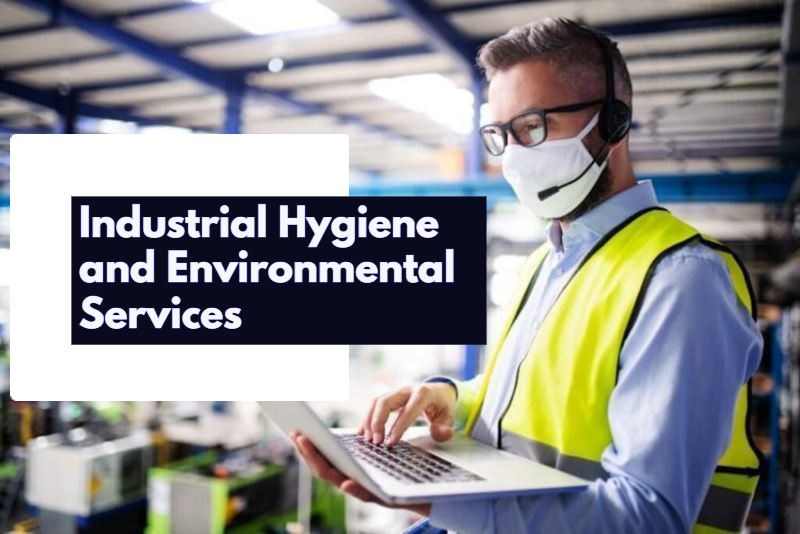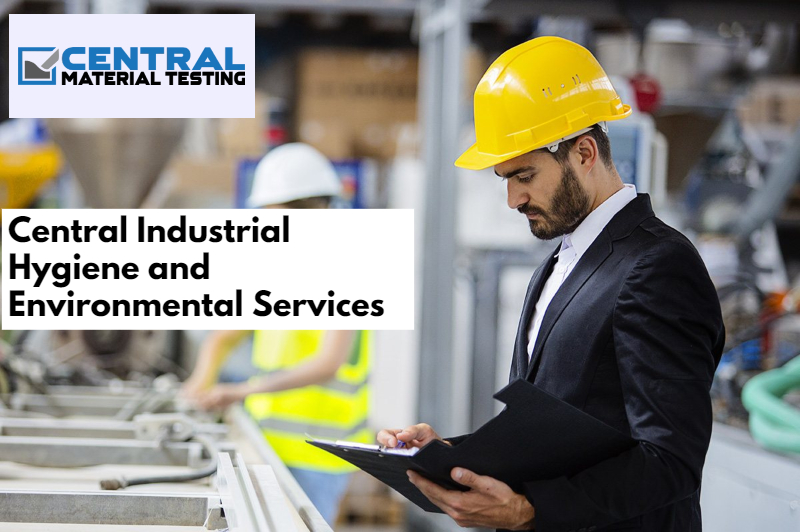Environmental concerns are gradually at the forefront calling for the role of industrial hygiene to be maintained for the staff, workers, and employees. This has become not just relevant but essential. The direction focuses on the well-being of workers with Central Industrial Hygiene and Environmental Services. Industrial hygiene acts as a core value to promote an environment where the health hazards of work surroundings do not adversely affect the workforce. Central Material Testing is an Edmonton-based company offering Central Industrial Hygiene and Environmental Services with improved tools and trials for mitigating occupational dangers. Let’s explore the fundamentals and significance of industrial hygiene and the ergonomic problems of the high-tech workplace.
As we journey through the critical components of industrial hygiene, we will examine how to integrate ergonomics, control noise pollution, manage temperature, and maintain indoor air quality to mitigate chemical exposures, guard against radiation, and combat biological hazards.
What Is Industrial Hygiene?
Industrial hygiene calls for health professional to use their knowledge of science, engineering, and psychology to recognize and assess risks, improve safety measures, and execute workplace safety programs. It is a substantial discomfort among workers or the community to be exposed to health hazards. Central Industrial Hygiene and Environmental Services use monitoring and analytical methods to identify the extent of worker exposure and use engineering, work practice controls, and other trials to control potential health hazards.
The spectrum of workplace hazards can be a mixture of potential chemical, physical, and biological hazards. Central Industrial Hygiene and Environmental Services must navigate through this diverse pattern from the worst implications of solvent vapors to the paint particles and dust from cleaning products. Such chemical hazards with extreme exposures lead to chronic respiratory conditions, cancers, and skin disorders. Moreover, extreme noise, vibration, and temperature dissipations pose physical risks. The imprint of such physical hazards ranges from musculoskeletal disorders to heat-related illnesses and hearing loss. Furthermore, Biological and Ergonomic hazards include exposure to pathogens viruses, bacteria, and fungi resulting in infectious diseases. Poorly designed workspaces can cause ergonomic strains that will lead to injuries such as chronic back problems or carpal tunnel syndrome.
Significance of Industrial Hygiene and Environmental Services
The importance of Central Industrial Hygiene and Environmental Services is underlined by its deep impact on reducing occupational illnesses and injuries. Over 4.7 million nonfatal workplace illnesses and injuries were reported in the private industry sector in 2022 throughout Canada with more than 4,700 resulting in death. Through vigilant Central Industrial Hygiene and Environmental Services & best practices; the incidence of such disasters can be considerably reduced.
For example, the risk of respiratory ailments can be minimized by monitoring dust and chemical vapors. Likewise, the guideline of contact with harmful substances can avert skin conditions. Moreover, industrial hygiene and environmental health analysis play a pivotal role in cancer prevention by governing exposure to carcinogens and substantially decreasing musculoskeletal disorders.

Industrial Hygiene Programs
In a dynamic industrial landscape where emphasis is often placed on production and performance rather than environment and staff. The significance of Central industrial hygiene and environmental services can sometimes be overshadowed. Nevertheless, the basis of any successful operation lies in its workforce. Health preservation with its systematic approach ensures that the complexities of industrial processes are significantly reduced. Employers can gain substantial benefits from robust industrial hygiene and environmental practices without compromising the well-being and safety of workers. This includes reduced absenteeism and turnover, lower healthcare costs, increased productivity, and enhanced regulatory compliance. Adherence to safety and health regulations not only evades penalties but also creates a reputation for responsible governance.
Establishing an Effective Industrial Hygiene Program
Companies can undertake several essential steps to ensure the effectiveness of an industrial hygiene program. The process starts with hazard identification involving comprehensive workplace evaluations and an examination of employee health records. Successively, a thorough hazard evaluation considers factors such as probability of exposure, severity, and the number of exposed workers. Businesses then develop strategies for hazard control applying administrative policies, engineering controls, and personal protective equipment (PPE) as necessary. Constant monitoring of implemented controls ensures their effectiveness with slight adjustments from time to time to guarantee proper functionality. Worker education and training play a critical role by informing employees about the nature of hazards. It teaching them protective measures. All this includes the correct use of PPE and observance to safety protocols.
Key Components of Industrial Hygiene
The roles of central industrial hygiene and environmental services are crucial in the intricate realm of workplace safety, covering well beyond sheer adherence to regulations. The dedicated team is positioned as guardians of occupational health to foster work environments that are slightly exposed to risks.
Identification and Assessment of Workplace Hazards
At the core of the Central Industrial Hygiene and Environmental Services & responsibilities lies the ability to discern potential hazards. This draws from an extensive knowledge base in physics, chemistry, and engineering. Their expertise enables them to recognize a spectrum of dangers by encompassing chemical and biological exposures that could adversely impact health together with physical threats like noise pollution and radiation.
Evaluation of Risk
Industrial hygiene and Environmental parameters go beyond hazard identification as they meticulously evaluate the associated risk levels. Their valuations consider factors such as the duration, frequency, and intensity of exposure along with the number of workers involved. This inclusive risk evaluation is essential in prioritizing hazards that require instant attention and control.
Implementation of Control Measures
Once risks are identified and dangers assessed, industrial health practitioners shift their focus to executing control measures. They devise and implement a range of measures tailored to specific situations. These procedures may include engineering solutions like administrative policies such as modified work schedules, enhanced ventilation, and recommendations for personal protective equipment (PPE).
Monitoring and Effectiveness
Central Industrial Hygiene and Environmental Services also bear the responsibility of certifying that the implemented control measures efficiently reduce or eliminate risks. This involves consistent inspections, noise level measurements, air quality testing, and other forms of monitoring. They adapt and improve these controls based on the latest research and technology to ensure the ongoing effectiveness of these measures.
For administrations looking to not just comply with general standards but to lead in environmental stewardship. This requires embracing cutting-edge technology with tools that monitor, analyze, and manage environmental data. Central Industrial Hygiene and Environmental Services are integral to maintaining a pulse on industrial impacts.
In this regard, Central Material Testing offers a pathway to achieving and surpassing industry standards. By utilizing Central industrial hygiene and environmental services with sophisticated monitoring equipment. Companies can gain real-time insights into the environmental parameters around them. We help to empower them to make data-driven decisions within the thresholds of safety and sustainability.



Leave a Reply